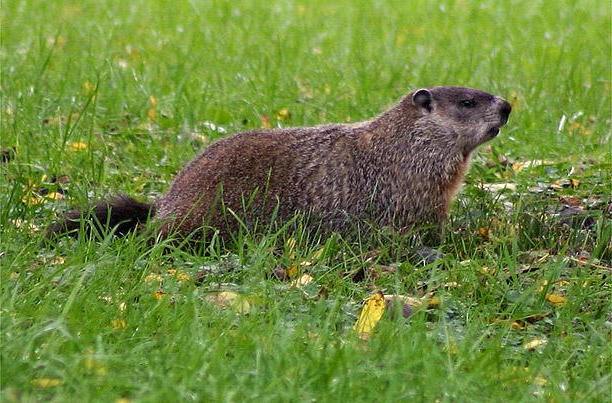Groundhogs, also commonly called as whistle dogs or woodchucks, can do a lot of damage to gardens and vegetable crops. They can displace a huge amount of soil when they make their burrows deep underground, and this can damage the soil. Groundhogs also feed on vegetable crops, so they can cause significant damage to your plants and cost you some money.
It’s said that one acre can provide a home to a single or a couple of adult groundhogs, and that it’s rare for there to be more since these animals are very territorial. However, it’s not surprising to see more of them in one acre, especially if you live in areas known for a high number of groundhogs.
If you suspect that your garden is providing a home to one, then here are some signs that a groundhog is indeed infesting your garden.

The Presence of Burrows
The most common telltale sign of a groundhog infestation is burrows. Some of these burrows are hidden by long and tall grass. If you see a burrow like this, this means that the burrow was made before the groundhog hibernated for winter. If the burrow is in plain sight, then it means that the burrow was made during the summer season.
One burrow opening though usually means that there are more scattered all over your garden. Groundhogs create mazes of tunnels underground, sometimes with multiple entrance and exit holes for easy access into their burrow and easy escape routes. You’ll easily recognize the main entrance of the burrow because there will be mounds of fresh earth found around the hole.
The Presence of Groundhog Tracks
In addition to the presence of burrows and holes in the ground, you’ll also see tracks on the soil where the groundhog walked on. The tracks are usually spaced about four inches to a foot apart, but the distance between the tracks depends on whether or not the animal was running. The characteristic features of a groundhog track is that the front paw print usually has five toe prints, while the hind paw print usually has four toe prints.
Of note though; you won’t see groundhog tracks during the winter season because they are hibernating deep underneath the ground. You will only see the tracks during the warmer season when they’re out foraging for food or looking for a mate.
Groundhog Feeding Signs
Rabbits and groundhogs both feed on vegetable crops, so those chewed portion on your plants may mean that a rabbit has been at it, as opposed to a groundhog feeding on your plant. However, if there are chewed portions plus the fact that there are also tracks and burrows on your property, then it could only mean that a groundhog is the culprit for the damaged vegetable crops.
Getting Rid of Groundhogs
There are a variety of ways that you can get rid of groundhogs, but always choose the humane and natural ways first before. Some examples of these include the use of groundhog repellents and the use of fences. If you can’t stop them with these means, then giving your local pest control company a call or a visit is always a good idea. They have better and more effective methods of getting rid of groundhogs.
Citations:
- The photo included in this article is a free image via http://www.sxc.hu/. Credits to Elkaholic.
Jennifer Dabney is a writer for Affordable Pest Control DC, a trusted pest control company in the area. For pests that can no longer be controlled, a professional service is still the best option.

